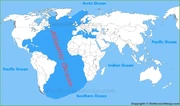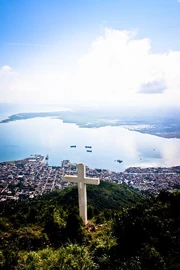Acul-du-Nord (Haitian Creole: Akil dinò) is an arrondissement of the Nord Department of Haiti. As of 2015, the population was 129,155 inhabitants. Postal codes in the Acul-du-Nord Arrondissement start with the number 12.

Location in Haiti
The arondissement consists of the following municipalities:
1. Acul-du-Nord🏛️
3. Milot
Neighboring Arrondissements
| North ↑ | Atlantic Ocean |  |
|---|---|---|
| South ↓ | Marmelade Arrondissement |  |
| East → | Cap-Haïtien Arrondissement |  |
| Southwest ←↓ | Plaisance Arrondissement |  |
| West ← | Limbé Arrondissement |  |
Meet the municipalities[]
Acul-du-Nord🏛️ (55,908) Named after the borough, and also its seat of government, this small northern Haitian city is comprised of 6 separate, smaller settlements; La Soufriere, Bas de l'Acul, Grande Ravine, Camp Louise, Mornet and Coupe a David. They rely on their production of fruits, rice, coffee and honey from beekeeping, taking much of their trade to nearby Cap-Haïtien. The harbor is also good for fishing. Camp Louise parish, in the Camp Louise municipal district, was founded by the colonial governor of Saint Domingue as long ago as 1699.
Plaine-du-Nord (41,225) Named after the region's primary geographical feature, this historical town is where the battle between Haiti's French colonizers and African slaves who worked in plantations began, leading to Haiti's independence and the freedom of slaves who became the very first official Haitians. One of the centres of the vodun religion in the country, Plaine-du-Nord is best known for its annual vodou festival on July 24. The festival brings thousands of worshippers to the small village every year to honor the lwa Ogou, who presides over matters of war, politics, iron and fire, as well as Saint-James, the Catholic warrior saint.
Milot (31,992) Despite being one of the smallest towns of the Northern Department, Milot remains one of the municipalities of the country most visited by Haitian and foreign tourists. In the 1800s, it was proclaimed the site of the country's first capital by King Henri Christophe, whose rule oversaw the construction of the beautiful Sans-Souci Palace. The construction also included the building of eight smaller palaces, fifteen chateaus, several forts and summer homes, as well as twenty plantations, all owned and managed by the then royal family.

Historical map of the Northern Plain

Michael Vedrine
